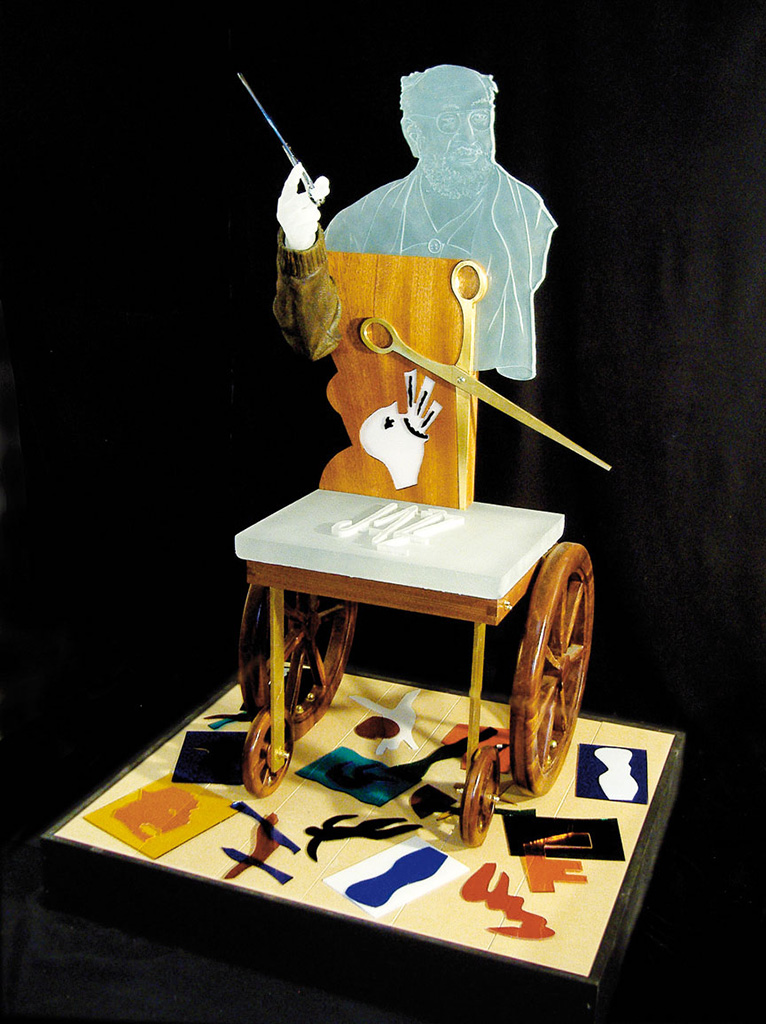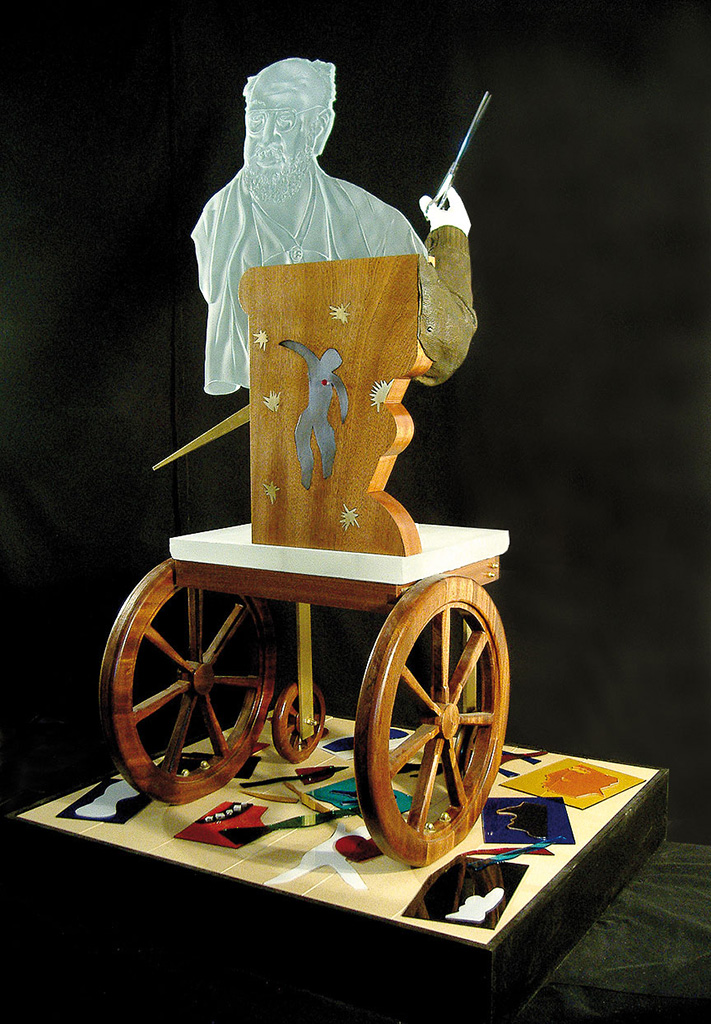Matisse Jazz
Materials Cast glass, carved lass, cut-out colored glass, bronze, wood, and cold-worked brass
Collection Collection: Mr. & Mrs. Harry Hart, Montreal, Quebec, Canada
Artists never retire, and in fact some of the more creative work has been produced in the later years of an artist’s life when physical limitations demand that the creative process find new forms of expression. This is something that I have begun to consider, not for the immediate future but certainly down the line. During his senior years Henri Matisse was confined to a wheelchair and he began his “cutout” series, which were arranged into compositions. The most famous group of these images was done with a handwritten text and was called Jazz. Matisse was 77 years old when this book of his was published and it conformed to the Keith Jarrett definition, “Jazz is an inner process that is manifested as a continual discovery”.
These cutouts were an outgrowth of Matisse’s continual desire for simplification. Reducing everything to an extreme of form and color while drawing with his scissors. The cutting process was quick, then the pieces were moved around until a final composition was created, and as Katrin Wiethege states in her essay Matisse: The Paper Cut-Outs, “Perhaps it is in this spontaneity and improvisation that the closest analogy to jazz music can be seen: repeated opening passages and variations of a theme working continuously towards a final composition.”
Matisse worked from monochromatic sheets of paper that had previously been painted with gouache. These pieces were assembled into compositions that were the exact size of the book that was eventually published. In my piece, an homage to this intensely creative period in the life of Matisse, I have included many of these improvised images in cut-out colored glass and metal.

